The Stargazing Majesties of Rural New England
Boston-area photographer Babak Tafreshi has dedicated his career to capturing our region's most ethereal nightscapes. Taken from vantage points in Massachusetts, Maine, and New Hampshire, here are 10 of his most stunning works.
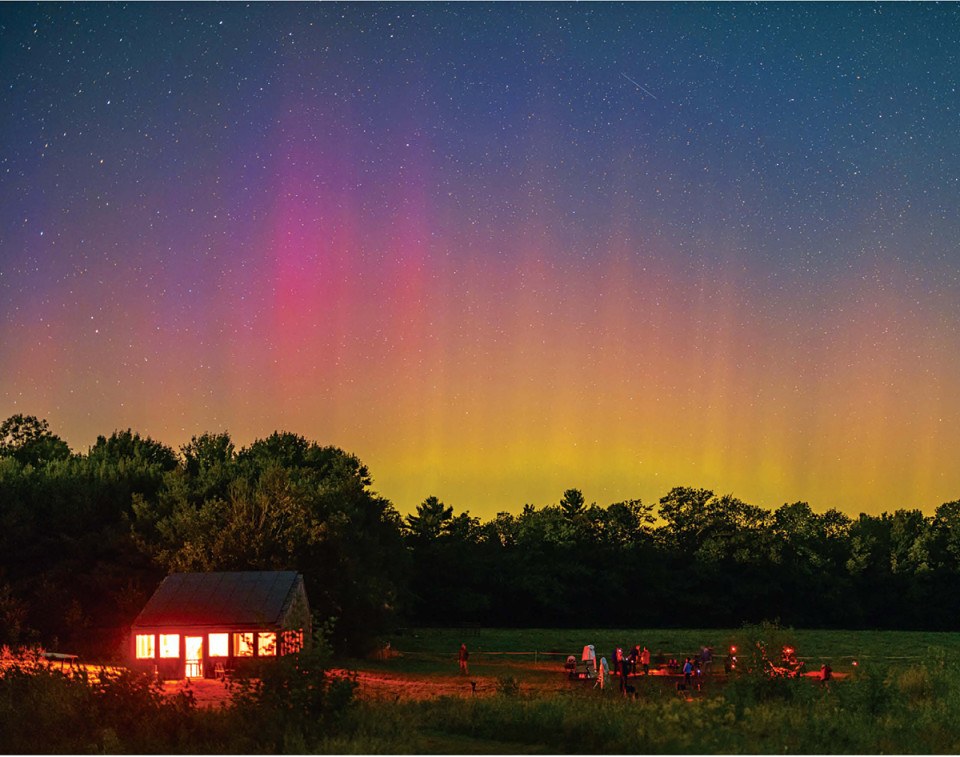
Stunning aurora rays reveal themselves in the sky above Washington, Maine. / Photo by Babak Tafreshi
When you look up at the night sky, what do you see? If you’re like many stargazers around Boston, the answer may be a jet-black horizon and not much else. That’s because light pollution, caused by everything from street lamps and office buildings to those obnoxiously bright headlights on Teslas, has caused the stars to go virtually extinct in our densely packed region, threatening human health—and the habitats of nighttime animals—along the way.
It’s become a big enough problem, in fact, that state representatives have proposed two bills that would regulate artificial light in city- and state-funded projects. Introduced by volunteer members of the International Dark-Sky Association and championed by the local Sierra Club chapter, the bills aim to improve outdoor lighting, conserve energy, and increase the amount of dark sky (and, by extension, those glittering stars poking through).
Still, in some pockets of New England—unencumbered by the neon trappings of urban life—the skies are already full of stars. And not just stars—nearly everything, from the craters of the moon to distant planets, is there for the naked eye to see. Locally based Iranian-American science photographer Babak Tafreshi has dedicated his career to capturing these stunning nightscapes. Not only is he the director of the World at Night program, a team of 40 photographers whose mission is to illuminate the importance of a dark sky, the National Geographic contributor also leads stargazing and photography retreats (including one in Maine every summer) to teach others how to reach for the stars and capture their beauty.
His ultimate goal? “I hope to spread the message that the wonder of seeing a sky filled with stars brings deep feelings of peace, enjoyment, and a connection to our past and future,” he says. “The night sky belongs to everyone.”
MASSACHUSETTS
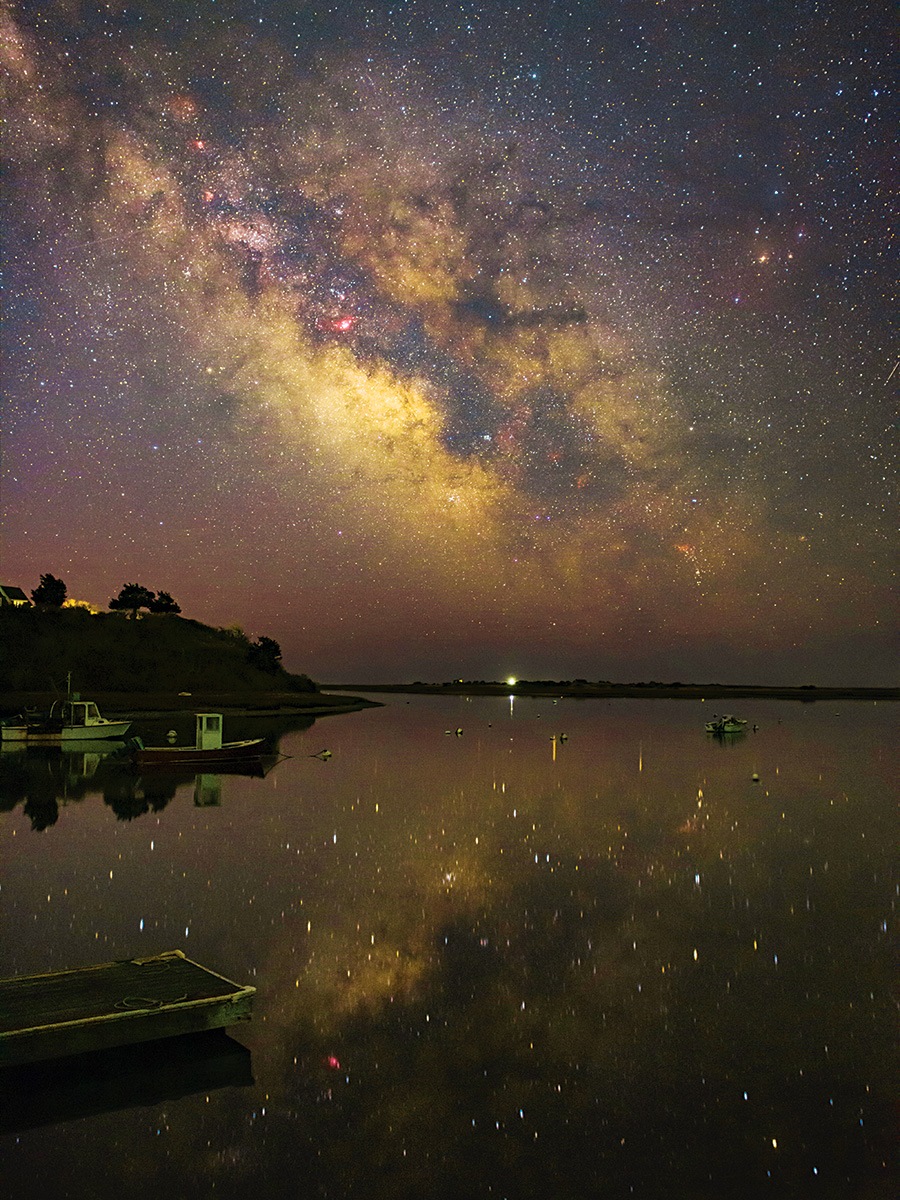
Chatham, Massachusetts. / Photo by Babak Tafreshi
Chatham, Massachusetts
The central bulge of the Milky Way rises above this peaceful cove just before twilight. Also visible in this 10-second-exposure image? The orange star Antares, the constellations Scorpius and Sagittarius, and a red interstellar cloud called the Lagoon Nebula. “To the naked eye, this view would be colorless, with fewer stars,” Tafreshi says. “But the Milky Way is still remarkably visible away from light pollution.”
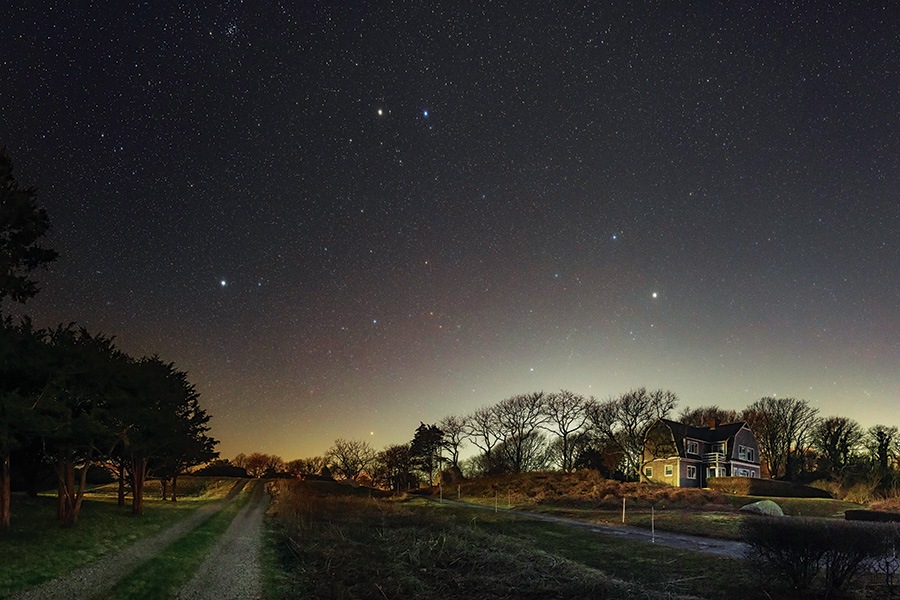
Falmouth, MA / Photo by Babak Tafreshi
Falmouth, Massachusetts
Winter constellations—including Gemini and Auriga—grace the night sky above a classic Cape home.
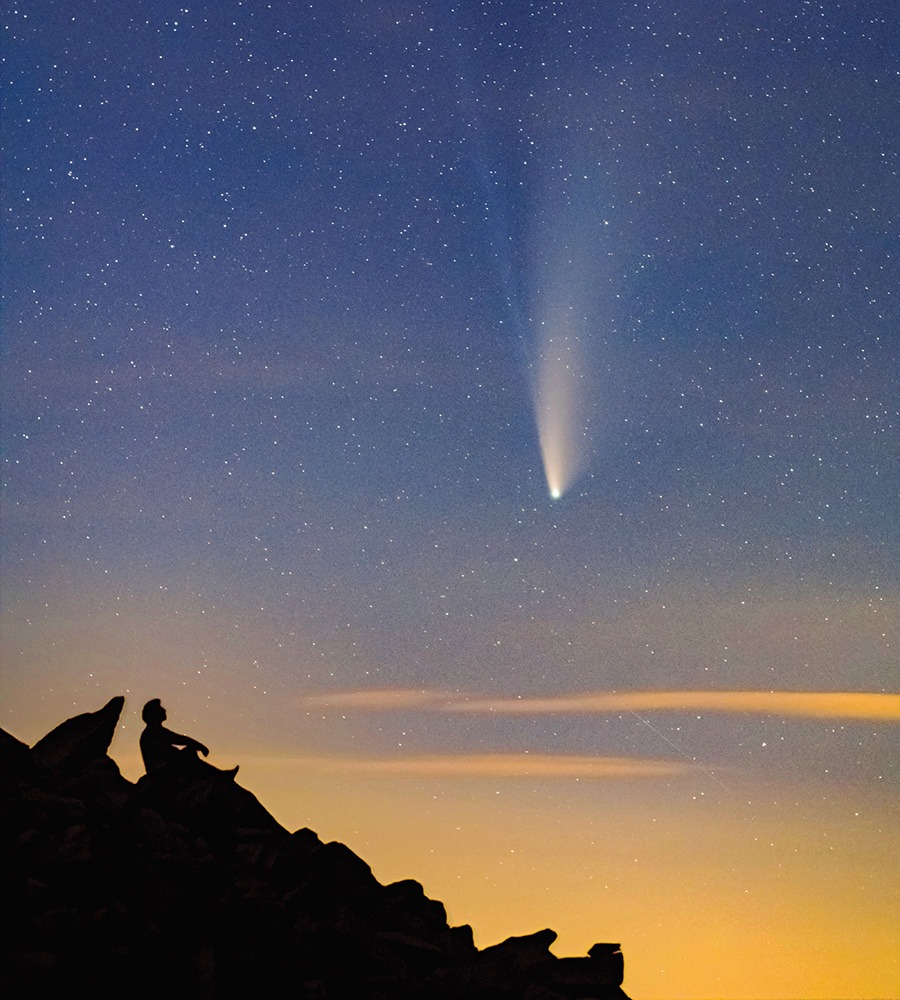
Halibut Point State Park, Massachusetts. / Photo by Babak Tafreshi
Rockport, Massachusetts
The comet NEOWISE makes an appearance at Halibut Point State Park before returning to the outer solar system; it’ll make its next journey back to Earth in 6,000 years.
Also: Where to Take a Stargazing Road Trip around New England
NEW HAMPSHIRE
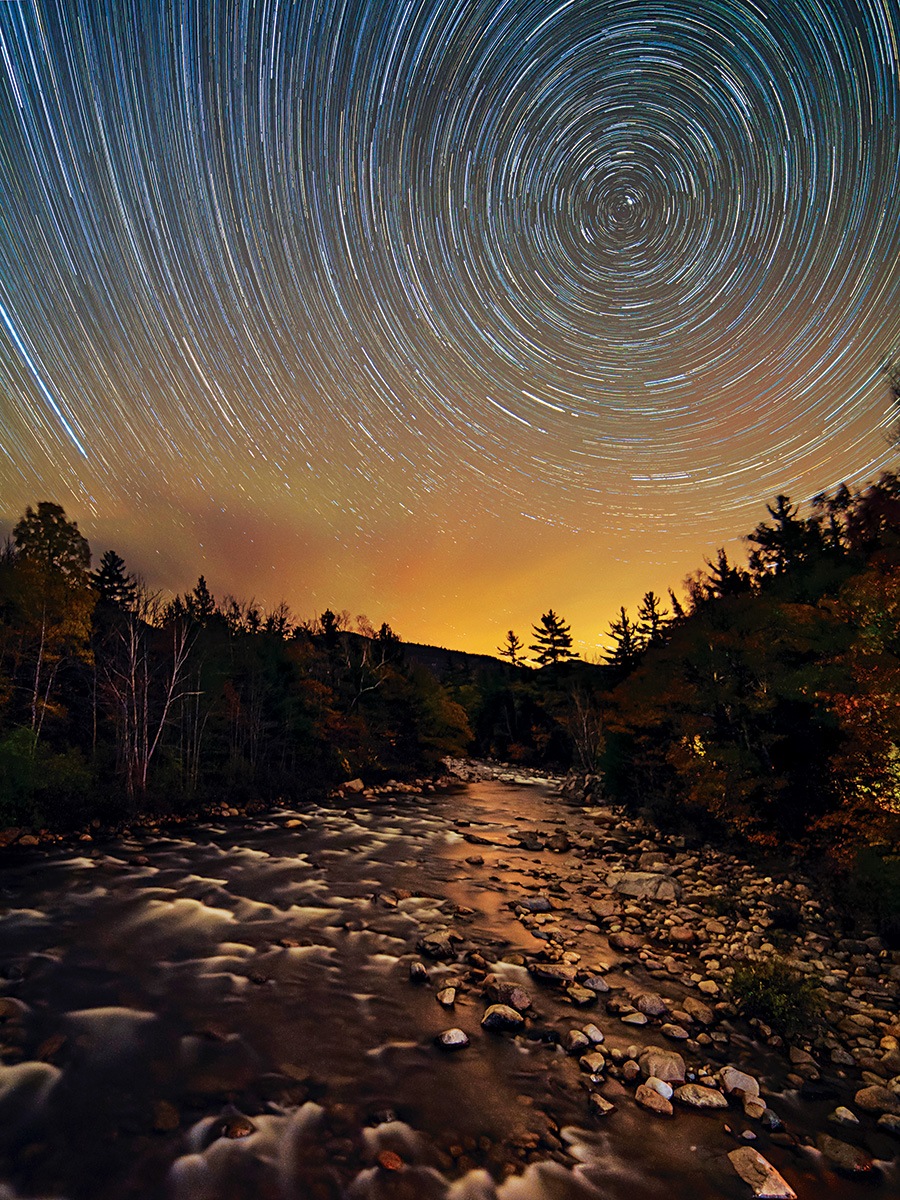
Along the Swift River in New Hampshire’s White Mountains. / Photo by Babak Tafreshi

Albany, New Hampshire
A long camera exposure reveals star trails—created by the Earth’s rotation—along the Swift River in the White Mountains. Polaris, the north star, can be seen near the center of the trails.
MAINE
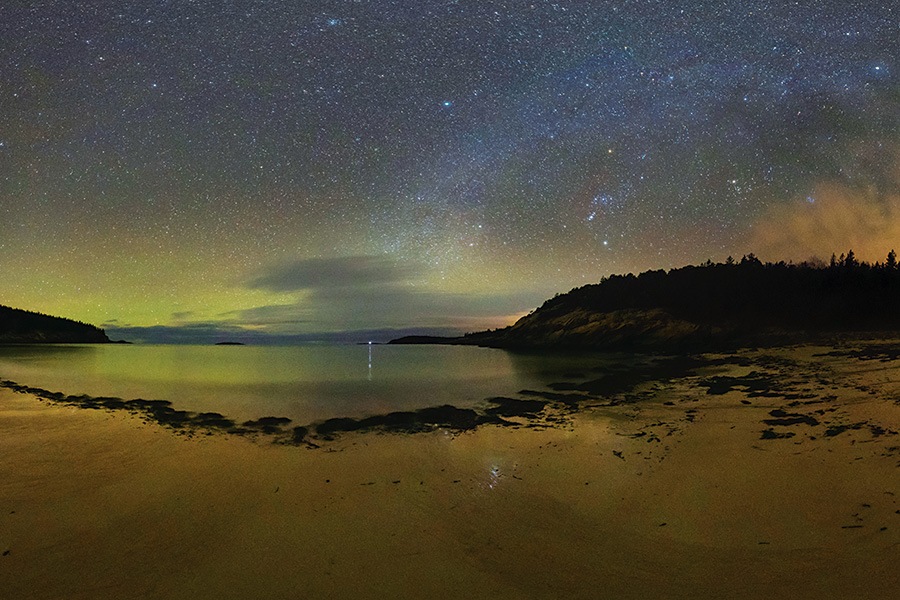
Acadia National Park, Maine. / Photo by Babak Tafreshi
Bar Harbor, Maine
It’s past midnight on a silent December night in Acadia National Park—one of Tafreshi’s favorite stargazing spots—and the sky is awash in celestial bodies, from Sirius to the constellations Orion and Taurus. “I was trying to complete a 360-degree panorama of the scene, and I had to be quick with the appearing clouds, lit by nearby Bar Harbor,” he explains.
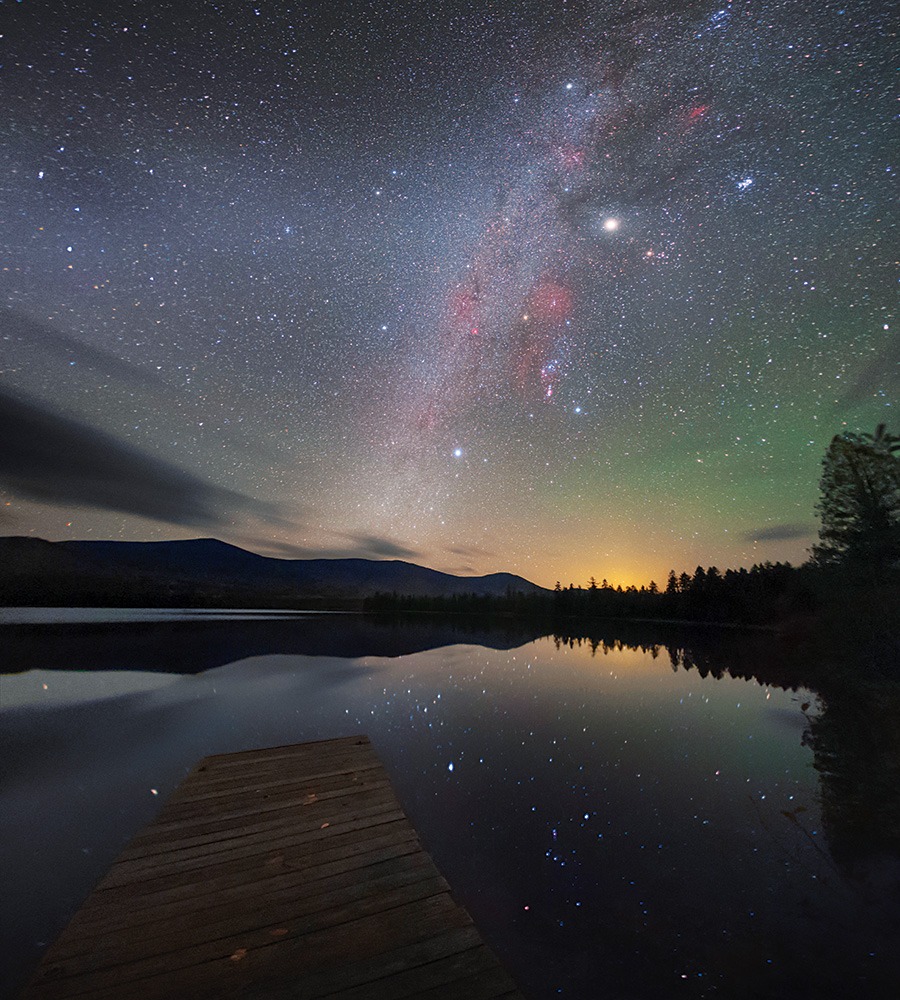
West Branch Pond in northern Maine. / Photo by Babak Tafreshi
Appalachian Mountain Club 100-Mile Wilderness Conservation Area, Maine
Caught above West Branch Pond in northern Maine, the brightest point in this photo is the planet Jupiter. The area is part of the Maine Woods International Dark Sky Park—“one of the best places on the East Coast to see natural night sky,” Tafreshi notes.
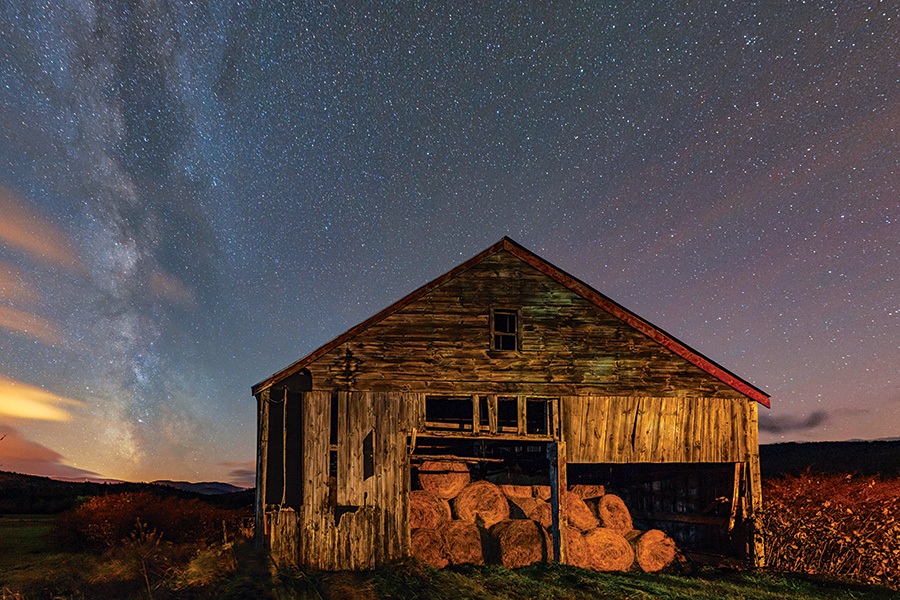
Fryeburg, Maine. / Photo by Babak Tafreshi
Fryeburg, Maine
The Milky Way makes an appearance above a weathered barn near the White Mountains on a clear October night.
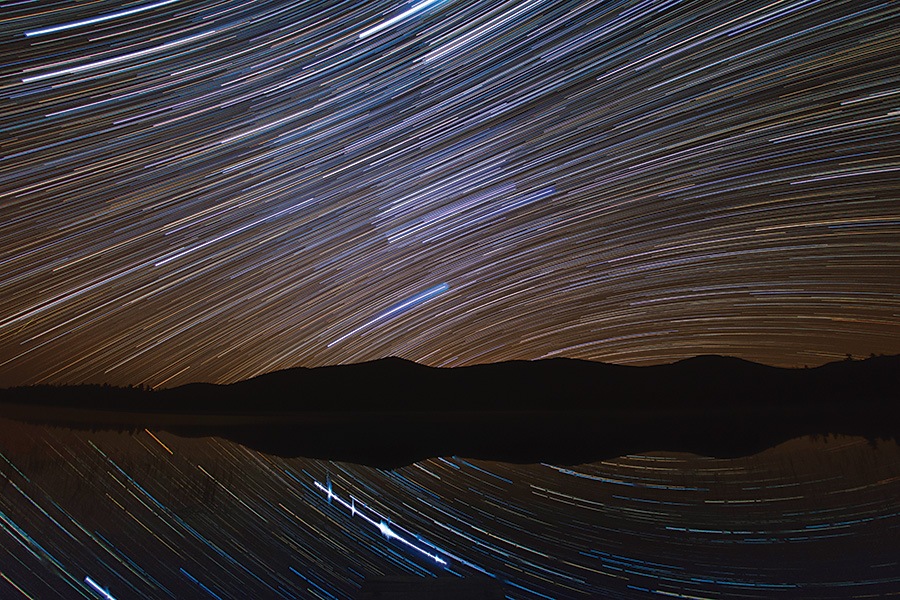
Appalachian Mountain Club 100-Mile Wilderness Conservation Area, Maine / Photo by Babak Tafreshi
Appalachian Mountain Club 100-Mile Wilderness Conservation Area, Maine
A long-exposure image reveals star trails above a remote lake in northern Maine. The winter constellations Orion and Taurus are visible.
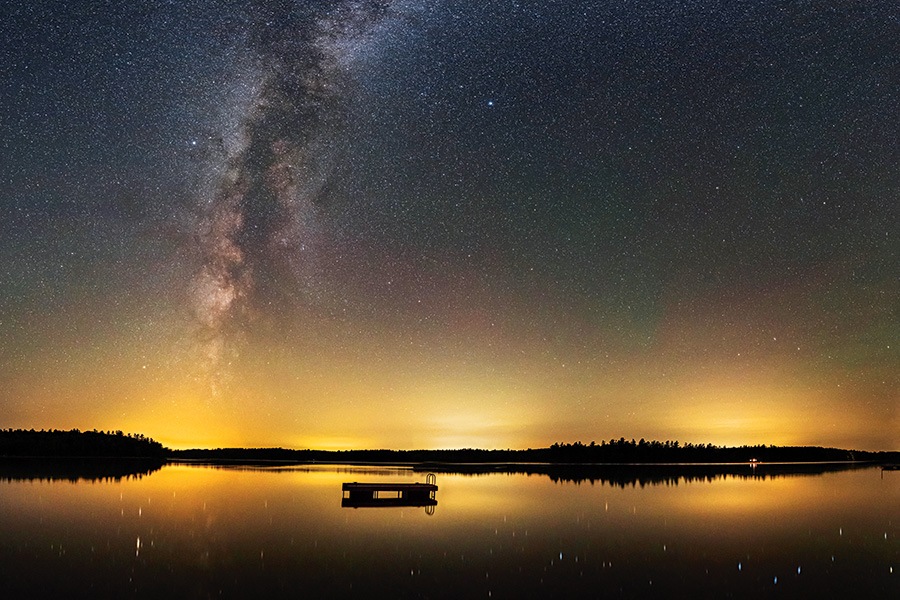
Washington, Maine. / Photo by Babak Tafreshi
Washington, Maine
The Milky Way reveals itself above a Maine lake as the sound of loons echoes across the water; in the distance is the light from three nearby towns.
First published in the print version of the March 2023 issue with the headline, “Reaching for the Light.”




